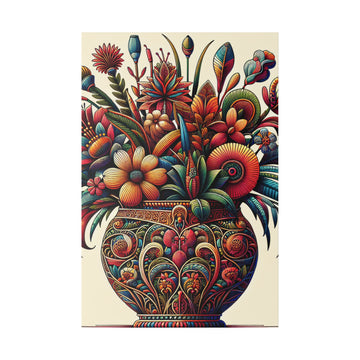Concrete Canvases: Street Art Stories
Concrete Canvases: Street Art Stories
Blog Article
From the commotion of town avenues on the calm sides of suburban laneways, street craft has blossomed right into a ethnic occurrence that is certainly as diverse since the surface areas it adorns. Faraway from the confines of classic galleries and also the exclusivity of substantial-stop craft companies, road art work opens a dialogue between traditions and also the community. In this complete consider the movement, we'll discover the wealthy past and contemporary value of Street Art Canvas as well as the effect it provides on our city landscapes.

The Beginnings of the Urban Trend
To actually fully grasp the importance of road craft, we need to revisit the sociopolitical climate that birthed the movements. At first a form of below the ground protest plus a document of cultural pleasure within the context of any marginalized immigrant and younger years traditions, streets craft was ways to reclaim open public spots and obstacle the standing quo.
Certainly one of street art's most influential pioneers, the enigmatic Banksy, exemplifies this ethos. His function often holds poignant sociable communications, incorporating darker humor with incisive political commentary. Banksy's anonymous persona also features the idea that road art is, at its core, a medium sized to the voiceless to get heard.
Juxtaposed with the transgressive the outdoors of very early street art, the movement has changed to become a legitimate form of modern art. Right now, places like Berlin, New York City, and Melbourne take pride in their streets art work, knowing it as being a vital component of their societal identity.
When the Avenues Speak
What collections street artwork apart from other artistic expressions is its connections using the environment. Each and every mural, tag, or mixture-up is actually a dialogue with the cityscape, a proof of the artist's ability to answer and enhance the metropolitan surroundings. Beyond simple appearance, street art work generates a feeling of position, taking the tempo and pulse of city lifestyle.
Streets craft can also be inherently ephemeral. The impermanence of their canvases, on account of conditions or the city's cleanliness steps, imbues these artworks using a poignant temporality, urging the general public to take pleasure in them as they previous.
Navigating Legal and Honest Gray Areas
Despite street art's increasing approval, it remains a practice fraught with lawful and moral complexities. The action of placing artwork without consent improves questions regarding general public acquisition of place along with the position from the artist in the community. What comprises wanton damage and what exactly is regarded as a open public services are often up for discussion.
Numerous municipalities have produced guidelines to assist neighborhood craft, supplying authorized ways for designers to beautify the city. Courses like São Paulo's Galeria de Arte Urbana and New York's Percentage for Art Program illustrate a shift in attitude, acknowledging road art's participation to metropolitan appearance and societal discourse.
Road Craft in the Electronic Era
The growth of social websites and computerized technology has propelled street artwork to new heights of visibility. Systems like Instagram permit designers to discuss their function instantaneously, getting to an international market. Hashtags and geotags have changed once-secret gemstones into tourist attractions, redefining the partnership between artwork, the public, and the computerized world.
Even so, this newfound notoriety has triggered problems about credibility and also the commercialization of street craft. With well-known manufacturers and promoting companies appropriating the design and style, some reason that the activity is shedding its countercultural benefit.

The Legacy of Spray-Coloured Dreams
At its primary, street artwork remains a democratic and reachable type of concept. It speaks to the diversity and vibrancy of our own urban areas, in the role of both a match to community and a catalyst for transform. Regardless of whether it's an excellent mural advocating for social justice or perhaps a whimsical piece that can bring a grin into a passerby, road art will continue to enrich our places and struggle our perceptions of art work.
The future of road art is based on the way we, as a culture, opt to assistance and engage from it. By accommodating the sounds of designers inside our metropolitan planning, we can easily foster conditions where road craft grows. It's not only in regards to what we see about the walls it's about the testimonies and chats these particular dynamic, expressive canvases motivate. Report this page